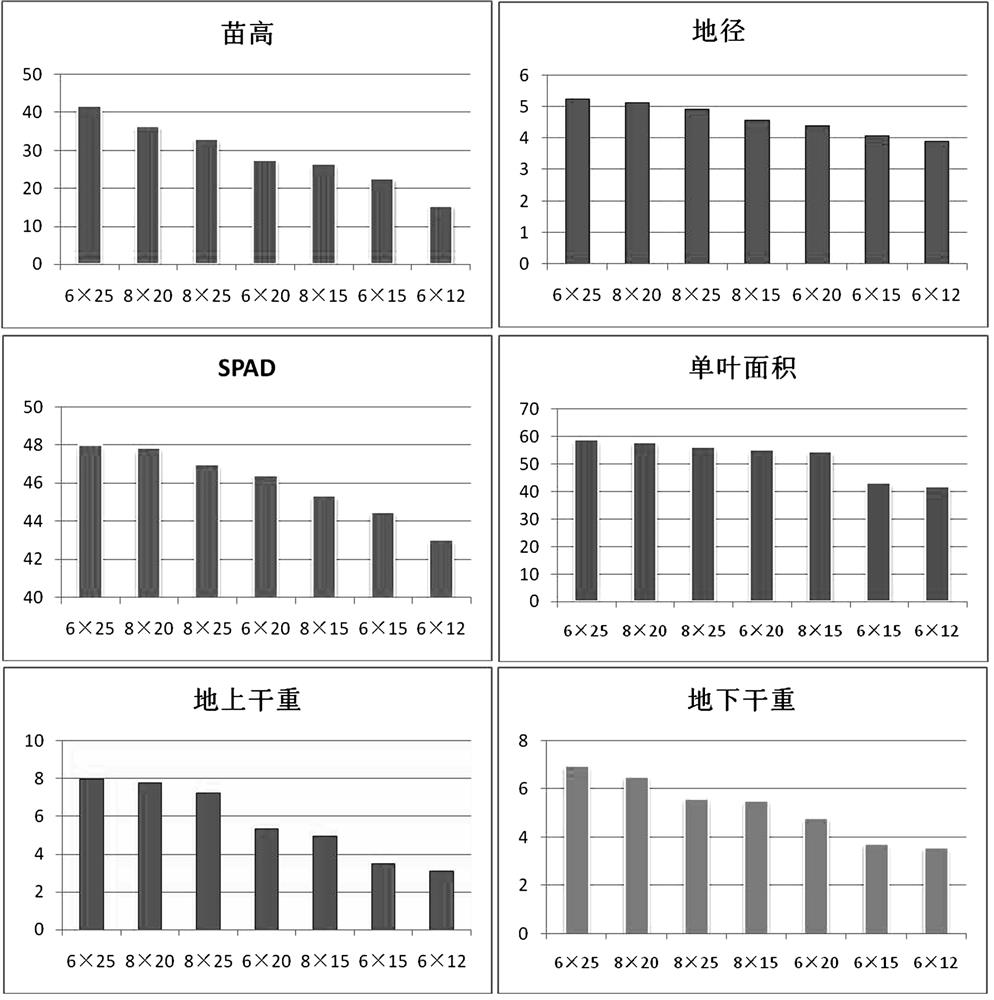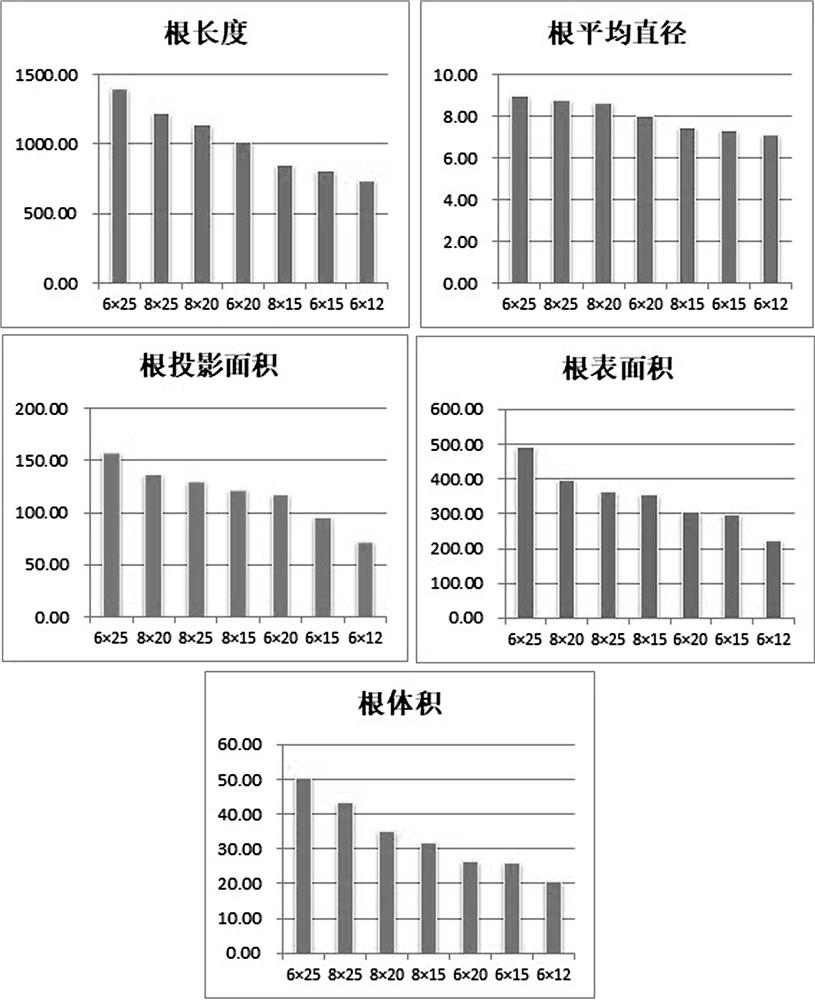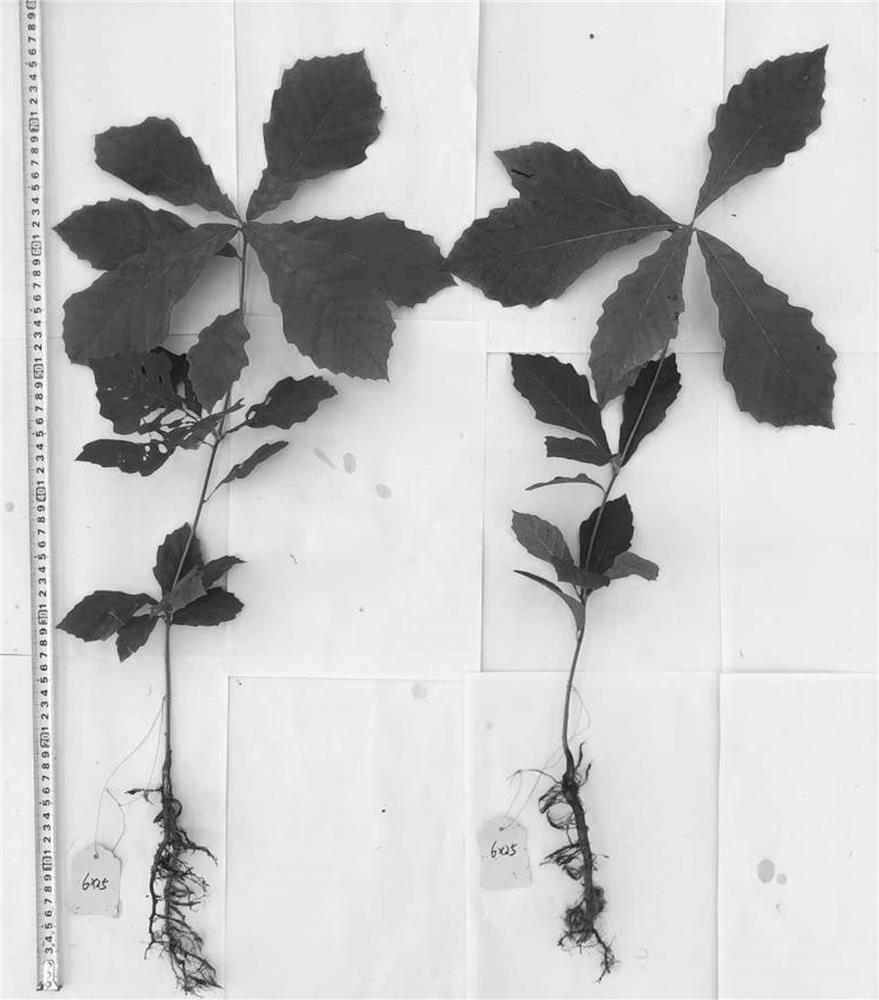A method for optimizing seedling root balls in light-duty substrate Quercus liaotungen non-woven containers
A non-woven container and light-weight substrate technology, applied in the field of tree seedling raising, can solve the problems of lack of research on the structure optimization of Liaodong oak non-woven container seedling root mass, inability to adapt to the root characteristics of seedlings, and failure to cultivate high-quality strong seedlings. , to reduce the transportation cost and labor cost of seedlings, alleviate the phenomenon of nest root, and achieve the effect of light weight
- Summary
- Abstract
- Description
- Claims
- Application Information
AI Technical Summary
Problems solved by technology
Method used
Image
Examples
example 1
[0028] Example 1: A method for optimizing the seedling root mass of a light-weight substrate Quercus liaodong non-woven container, the steps are: preparation of substrate, treatment of seeds, preparation of seedling container, preparation of seedbed, seed sowing, seedling stage management, air cutting root, data Investigation; fill the prepared substrates in the corresponding nursery containers of several specifications, sow the treated high-quality Quercus liaotungensis seeds in non-woven fabrics, carry out conventional nursery technology maintenance in the growing season, and measure the various items after the seedlings stop growing in autumn. growth indicators.
[0029] Specific steps are as follows:
[0030] According to peat soil: perlite: vermiculite: decomposed bark 2.5:2.5:2.5:2.5 (volume ratio), mix and stir evenly, and add 2% calcium superphosphate as base fertilizer; use 40% formalin Dilute the solution 800 times and pour the substrate, and the water content of th...
example 2
[0047] Example 2: In order to further prove the effect of the present invention, a non-woven container seedling with a specification of 6cm×25cm and a 16cm×16cm black nutrition pot container seedling were selected to carry out a comparative test. The test methods of substrate ratio, seed sowing, and seedling management are the same as those of Example 1. Randomized block design, one treatment is randomly arranged in each plot, and each treatment has 30 generations (pots). The growth indicators such as seedling height and ground diameter are counted, and the specific data are shown in Table 3. It can be seen that the strong seedling index of the 6cm×25cm non-woven container seedlings is significantly higher than that of the control black nutrition pot container seedlings.
[0048] Table 3 Comparison of growth indexes of two kinds of container seedlings in non-woven fabric and black nutrition bowl
[0049]
[0050] Note: height-diameter ratio = seedling height / ground diamete...
example 3
[0051] Example 3: In order to further prove the effect of the present invention, the non-woven container seedlings and plug seedlings of 6cm×25cm specifications were selected to carry out a comparative test. The test method is the same as that of Example 2, and the specific data are shown in Table 4. It can be seen that the strong seedling index of 6cm×25cm non-woven container seedlings is significantly higher than that of control plug seedlings.
[0052] Table 4 Comparison of growth indexes of two kinds of container seedlings between non-woven fabrics and plug seedlings
[0053]
PUM
 Login to View More
Login to View More Abstract
Description
Claims
Application Information
 Login to View More
Login to View More - R&D
- Intellectual Property
- Life Sciences
- Materials
- Tech Scout
- Unparalleled Data Quality
- Higher Quality Content
- 60% Fewer Hallucinations
Browse by: Latest US Patents, China's latest patents, Technical Efficacy Thesaurus, Application Domain, Technology Topic, Popular Technical Reports.
© 2025 PatSnap. All rights reserved.Legal|Privacy policy|Modern Slavery Act Transparency Statement|Sitemap|About US| Contact US: help@patsnap.com



